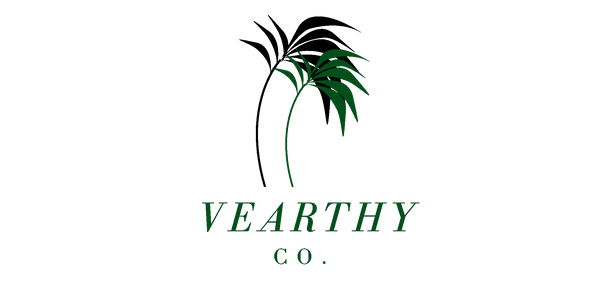
Benefits of Switching to an Eco-Friendly Toothbrush
Share
Across Canada and around the world, more people are embracing eco-conscious living - rethinking what they buy, how it’s made, and where it ends up. From grocery bags to water bottles, sustainable alternatives are reshaping daily routines. But one item often overlooked in the sustainability conversation is something we use every single day: the toothbrush.
Traditional toothbrushes may seem harmless, yet their environmental footprint is massive. Switching to an eco-friendly toothbrush is one of the simplest ways to make your morning routine more sustainable - without sacrificing effectiveness or comfort.
Understanding Eco-Friendly Toothbrushes
So, what makes a toothbrush eco-friendly? In essence, it’s about using materials and designs that reduce waste, lower emissions, and minimize harm to the planet.
- Traditional plastic toothbrushes are made from petroleum-based plastics that take hundreds of years to decompose. More than 3.5 billion are discarded each year, with most ending up in landfills or oceans.1
- Eco-friendly toothbrushes replace these plastics with renewable or biodegradable materials - like bamboo handles, plant-based bristles, or recycled plastics.
Beyond the environmental benefits, these toothbrushes often feature natural designs that feel better in your hand and align with mindful, intentional living.
Types of Eco-Friendly Toothbrushes
Bamboo Toothbrushes
Bamboo is one of the most sustainable resources on Earth. It grows rapidly, regenerates without replanting, and requires no pesticides or fertilizers. Bamboo toothbrush handles are biodegradable, meaning they can safely return to the earth when composted properly.
Beyond sustainability, bamboo handles provide a natural texture and ergonomic comfort - adding a touch of calm to your morning routine.
Biodegradable and Plant-Based Bristles
Many eco-friendly toothbrushes now use castor seed oil bristles (nylon 1010) - a plant-based material derived from the castor bean plant. These bristles offer the same flexibility and cleaning performance as traditional nylon but come from renewable, non-petroleum sources.2
While they aren’t fully compostable, they significantly reduce fossil fuel reliance and support the shift toward bio-based materials.
To learn more about castor seed oil bristles, check out our in depth article here:
Castor Seed Oil Bristles: A Plant-Based Alternative to Plastic
Recycled Plastic Toothbrushes
Some brands create toothbrushes from recycled plastics - turning old materials into something new. This reduces the need for virgin plastic production and supports circular design. However, it’s worth noting that these brushes are only as sustainable as their recycling and take-back systems.
Comparing Eco-Friendly Toothbrush Brands
The sustainable toothbrush market has expanded rapidly. Here are some of the leading types and brands:
- Vearthy Bamboo Sonic Electric Toothbrush — bamboo handle, rechargeable design, and plant-based bristles. Ideal for Canadians seeking long-term sustainability and modern performance. Learn more →
- Humble Brush — minimalist bamboo design, biodegradable handle, and eco packaging.
- Preserve — made from recycled yogurt cups and fully recyclable through mail-back programs.
Prices vary, but eco-friendly toothbrushes often cost between $5–$89 depending on materials and reusability. Over time, their durability and environmental value far outweigh the initial price.
Tips for Choosing the Right Eco-Friendly Toothbrush
Assessing Bristle Types
- Soft bristles are recommended by dentists for gentle gum care.
- Charcoal-infused bristles offer natural whitening properties and antibacterial benefits.
Handle Considerations
- Look for ergonomic handles that feel comfortable and balanced.
- Bamboo handles can vary in size and shape - find one that fits your brushing style.
Packaging and Shipping
- Choose plastic-free packaging, compostable mailers or recyclable.
- Support brands with carbon-neutral or local shipping options to reduce emissions.
5. Maintaining and Disposing of Eco-Friendly Toothbrushes
Proper Brushing Techniques
Use gentle circular motions and replace your brush head every 3 months (or sooner if bristles fray).
Cleaning and Storage
Bamboo is naturally antimicrobial, but it’s best to keep your toothbrush dry between uses. Store upright in a well-ventilated holder to prevent moisture buildup.
Responsible Disposal
When it’s time to replace your toothbrush:
- Check local recycling programs for plant-based or recycled plastic options.
- Compost the bamboo handle after removing the bristles.
6. Eco-Friendly Oral Care Beyond the Toothbrush
Toothpaste Tablets and Powder
Plastic-free toothpaste tablets are a growing favourite among eco-conscious Canadians. They come in reusable tins or compostable pouches and are just as effective as traditional toothpaste.3
Flossing and Mouthwash
Swap nylon floss for compostable silk or cornstarch-based floss, often packaged in refillable glass containers. For mouthwash, look for tablets or refill stations to eliminate single-use bottles.
7. Addressing Common Misconceptions
- “Eco-friendly brushes don’t last.” — Studies show bamboo and bio-based bristles perform comparably to traditional ones.2
- “Bamboo harvesting harms forests.” — Bamboo regenerates quickly without deforestation, making it one of the most sustainable materials.4
- “They’re less hygienic.” — Bamboo is naturally antimicrobial, and proper drying keeps your brush clean and safe. 5
8. Making a Positive Impact
Every toothbrush swap matters. When multiplied by millions, these small decisions drive meaningful change in how products are made and disposed of.
Choosing a bamboo or plant-based toothbrush means aligning your habits with your values - caring for your health while respecting the planet.
At Vearthy, we design essentials that blend sustainability, performance, and comfort, proving that responsible choices can also be beautiful ones.
To Sum It Up
Switching to an eco-friendly toothbrush is more than a simple swap - it’s a statement about the world you want to live in. With each brush, you’re reducing waste, supporting innovation, and helping build a cleaner, healthier future for all.
Start small. Brush better. Live sustainably.
Explore Vearthy’s Bamboo Sonic Electric Toothbrush
References
- National Geographic. (2019). How your toothbrush became a part of the plastic crisis. https://www.nationalgeographic.com/environment/article/story-of-plastic-toothbrushes
- Medhat S. Farahat Khedr (2021). Bio-based polyamide. https://www.researchgate.net
- New Atlas. (2019). Canadian duo invent a toothpaste tablet to eliminate plastic tubes. https://newatlas.com/around-the-home/change-toothpaste-tablets
- World Bamboo Organization. (2023). Bamboo: The World’s Most Renewable Material. https://worldbamboo.net
- Research Gate(2023). Low-environmental-impact Bamboo Toothbrushes Demonstrate Comparable Hygienic Condition to That of Plastic and Biomass Plastic Toothbrushes after Use and Storage https://www.researchgate.net/
